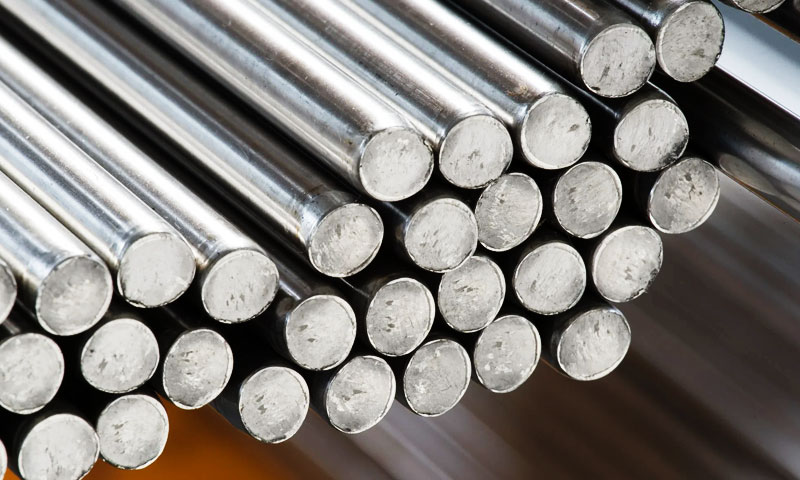1. 導入
1.4122, commonly referenced by its European designation X39CrMo17-1, is a martensitic chromium stainless steel designed to deliver a blend of 硬度, wear resistance and reasonable corrosion performance.
It occupies a practical middle ground between tool steels and corrosion-resistant stainless grades: hardenable by heat treatment to high strengths and abrasion resistance, yet offering better resistance to corrosion than many carbon steels.
2. 何ですか 1.4122 ステンレス鋼
1.4122 (呼ばれます X39CrMo17-1) aです martensitic chromium ステンレス鋼 — a hardenable, magnetic stainless grade designed to deliver a balance of high hardness/wear resistance そして 中程度の腐食抵抗.
Engineers choose 1.4122 for components that require sharp edges and durable cutting surfaces (カトラリー), precision shafts and spindles, wear parts and certain valve or pump components where moderate corrosion resistance is adequate.
It is distinct from austenitic stainless steels (例えば。, 304) that are non-magnetic and highly corrosion-resistant, and from ferritic grades that are not hardenable by quenching;
1.4122’s defining characteristic is its martensitic microstructure after quenching, which produces high hardness and strength.
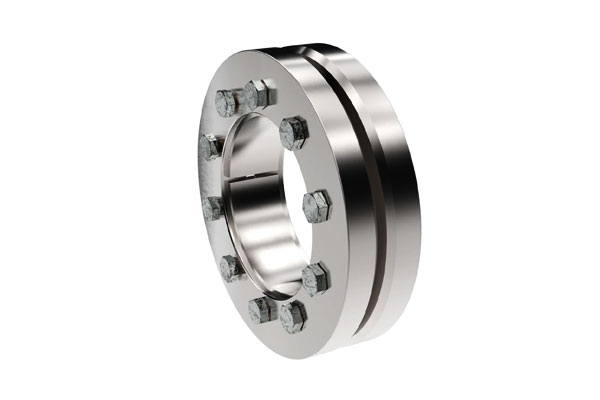
3. の化学組成 1.4122 ステンレス鋼
Below is a clean, professional table showing the chemical composition ranges for 1.4122 (X39CrMo17-1) stainless steel together with a concise, engineering-focused description of the role each element plays in this alloy.
| 要素 | 範囲 (wt%) | Primary role(s) — concise |
| c (炭素) | 0.33–0.45 | Main hardening agent — increases martensite hardness and wear resistance; reduces toughness and weldability at high levels. |
| cr (クロム) | 16.5–17.5 | Provides corrosion passivity and contributes to hardenability and carbide formation. |
| MO (モリブデン) | 0.80–1.30 | Improves hardenability, strength and resistance to localized corrosion. |
| で (ニッケル) | ≤1.00 | Minor toughness aid; kept low to retain martensitic response. |
| Mn (マンガン) | ≤1.50 | Deoxidizer and mild hardenability aid. |
そして (シリコン) |
≤1.00 | Deoxidizer and modest solid-solution strengthener. |
| p (リン) | ≤0.04 | Impurity — kept low to avoid embrittlement and fatigue loss. |
| s (硫黄) | ≤0.015 | Minimized (not a free-machining grade) because it lowers toughness and fatigue performance. |
| fe (鉄) | バランス | Matrix element — forms the martensitic steel base. |
| Trace elements (の, v, cu, n, 等) | 通常 <0.05–0.20 | Small micro-alloying effects or tramp elements; can refine grain or slightly modify properties when present. |
4. の機械的特性 1.4122 ステンレス鋼
Mechanical properties vary with heat treatment state. Below are representative ranges used for design guidance.
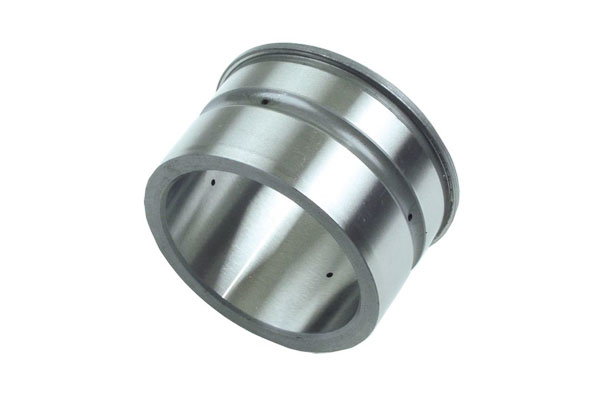
| 状態 / treatment | 硬度 (HRC) | 抗張力 (UTS, MPA) | 0.2% Proof / 収率 (MPA) | 伸長 (a, %) | シャルピーv-notch (約, j) |
| 柔らかい / 正規化 (delivery) | ~20–30 HRC | ~500–700 MPa | ~300–450 MPa | 10–18 % | 30–60 J |
| クエンチ & tempered → ~40 HRC (typical engineering temper) | ≈38–42 HRC | ~800–950 MPa | ~600–800 MPa | 8–12 % | 15–30 j |
| クエンチ & tempered → ~48–52 HRC (高い硬度) | ≈48–52 HRC | ~1,000–1,300 MPa | ~800–1,100 MPa | 3–8 % | 5–20 j |
| Maximum hardening (近く 55+ HRC) | >55 HRC | >1,300 MPA | 高い (approaching UTS) | 低い (<3 %)* | 低い (<10 j) |
5. Magnetic and Physical Properties of 1.4122 ステンレス鋼
Understanding the magnetic and physical properties of 1.4122 stainless steel is critical for design engineers, particularly when specifying components for precision machinery, ツーリング, or applications where thermal expansion and conductivity matter.
| 財産 | 典型的な値 | エンジニアリングの意味 |
| 密度 | 7.75–7.80 g/cm³ | Weight calculations, dynamic load, コンポーネント設計 |
| 熱伝導率 | 19–24 w/m・k | Heat dissipation, machining and thermal distortion |
| 熱膨張係数 | 10–11 ×10⁻⁶ /K | Dimensional stability under thermal cycles |
| 比熱 | 〜460 j/kg・k | Thermal management during processing |
| 磁気挙動 | 強磁性 | Consider in sensor proximity, electronic interference, magnetic assembly |
6. 耐食性
1.4122 stainless steel provides 中程度の腐食抵抗, superior to plain carbon steels but inferior to austenitic stainless steels.
Environments where it performs acceptably
- Fresh water and mildly oxidizing industrial atmospheres
- Organic acids and mild chemical environments, when polished or passivated
制限
- Not recommended for 塩化物が豊富な環境 (海水, 塩水) where pitting and crevice corrosion become significant.
- Localized corrosion resistance decreases with increasing hardness and tempering that expose microstructural heterogeneities.
Surface finishing and passivation
- 研磨 to a fine finish and 化学的不動態化 (例えば。, nitric acid treatment) improve corrosion performance by strengthening the passive film.
- コーティング (塗料, メッキ) or cathodic protection are common for long service life in marginal environments.
7. Heat Treatment and Hardening
熱処理 tailoring is central to using 1.4122 効果的に.
Typical hardening schedule
- オーステナイト化: heat to roughly 980–1020 °C (typical range for martensitic stainless steels; exact temperature depends on section size and furnace control) to form austenite.
- 消光: rapid cooling in oil or polymer quench to transform to martensite. Water quenching may be used but increases risk of distortion and cracking.
- 焼き戻し: reheat to 150–600°C depending on required final hardness/toughness balance.
Lower temper temperatures yield higher hardness and lower toughness; higher temp yields lower hardness but better ductility and impact resistance.
Hardening response
- Carbide-forming elements (cr, MO) and carbon content drive hardenability. 1.4122 exhibits good response allowing designers to select temper cycles for specific mechanical targets.
効果
- Strength increases dramatically after quench and temper.
- タフネス can be restored partially by tempering; there is a well-known tradeoff between hardness and toughness.
- 加工性 generally worsens after hardening; most machining is done in annealed or partially tempered conditions.
8. Machinability and Fabrication
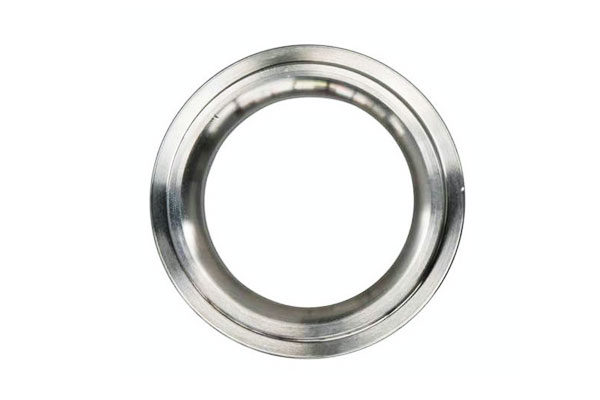
加工性
- Medium in annealed condition. In soft condition, 1.4122 machines comparable to other martensitic grades with appropriate tooling and cutting speeds.
Use sharp high-speed tooling, adequate coolant and conservative feeds when machining hardened portions. - Poor when hardened. 硬度 >45 HRC substantially increases tool wear; grinding and carbide tooling are typical.
溶接性
- 限定. High carbon and martensitic structure make the steel susceptible to hydrogen-induced cold cracking. Welding generally requires:
-
- 予熱します (例えば。, 150–250 °C depending on thickness)
- Low hydrogen electrodes
- Post-weld tempering or PWHT to relieve residual stresses and soften the HAZ
- For critical parts, welding is avoided or performed with post-weld heat treatment.
形にする
- コールドフォーミング: limited in hardened state; better to form in annealed condition and then harden.
- ホットフォーミング: may be used within controlled windows but requires subsequent heat treatment to restore designed properties.
9. 利点と制限
の利点 1.4122 ステンレス鋼
- 優れたハーデン剤: can be heat treated to a wide range of hardness and strength values.
- Balanced corrosion resistance: superior to carbon steels in many environments.
- 耐摩耗性: suitable for cutting edges, shafts and lightly loaded wear parts.
- 磁気: useful where ferromagnetic behaviour is needed.
の制限 1.4122 ステンレス鋼
- Weldability limitations — requires preheat and PWHT for critical joins.
- Cold formability: poor in hardened state; must be formed in annealed condition.
- Corrosion limits: not recommended for seawater or high chloride environments without protective measures.
- Machining when hardened: high tool wear, special tooling required.
10. の産業用途 1.4122 ステンレス鋼
1.4122 is used where a combination of 高い表面硬度, 耐摩耗性, 中程度の腐食抵抗 必要です:
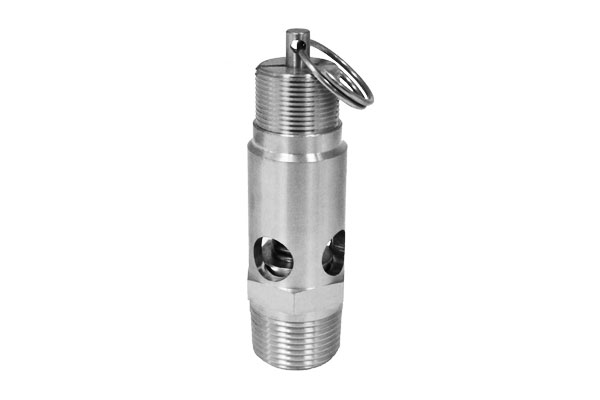
- Cutlery and surgical tools: ナイフ, scissors and razors benefit from the balance of hardness and stainless behaviour.
- Mechanical engineering: シャフト, 紡錘, pins and small gears that require precision, edge retention and good wear lifetime.
- Pumps and valves: 茎, seats and components exposed to fresh water or buffered fluids.
- Tooling and molds: for polymer processing and light tooling duties where corrosion resistance is helpful compared with plain tool steels.
- Other niche uses: ベアリングレース, small structural components, and certain fasteners where hardness and magnetic response are advantageous.
11. Comparison with Related Stainless Steels
1.4122 (X39CrMo17-1) aです martensitic chromium stainless steel with balanced hardness, 耐食性, and wear properties.
To guide material selection, it is helpful to compare it with other commonly used martensitic and chromium stainless steels, 含む 1.4034 (X46Cr13) そして 1.4112 (X90CrMoV18).
| 財産 / 合金 | 1.4122 (X39CrMo17-1) | 1.4034 (X46Cr13) | 1.4112 (X90CrMoV18) | Engineering Notes |
| 炭素 (c) | 0.36–0.44% | 0.42–0.50% | 0.85–0.95% | Carbon controls hardness and wear resistance; higher C increases hardness but reduces ductility. |
| クロム (cr) | 16–18% | 16–18% | 16–18% | Chromium provides corrosion resistance; all three are martensitic grades with moderate corrosion resistance. |
| モリブデン (MO) | 0.8–1.2% | 0–0.2% | 0.8–1.2% | Mo improves pitting and general corrosion resistance, 特に 1.4122 そして 1.4112. |
| バナジウム (v) | トレース | トレース | 0.1–0.3% | V increases hardness and wear resistance, で使用されます 1.4112 for high-wear tools. |
| 抗張力 (MPA) | 800–1100 (クエンチ & 気性) | 700–1000 | 1000–1400 | 1.4112 is a high-carbon grade designed for maximum wear; 1.4122 balances strength and toughness. |
硬度 (HRC) |
50–55 | 48–52 | 56–60 | 1.4112 achieves higher hardness due to higher carbon; 1.4122 suitable for tooling and shafts. |
| 耐食性 | 適度 | 適度 | 中程度から低い | 1.4122’s Mo addition improves resistance to mild oxidizing environments over 1.4034. |
| 加工性 | 適度 | 良い | 貧しい | 高炭素 1.4112 is more difficult to machine; 1.4122 balances machinability with hardness. |
| 典型的なアプリケーション | カトラリー, ツーリング, ポンプシャフト, バルブ | カトラリー, 手術器具, 機械部品 | High-wear tools, ナイフ, industrial blades | Selection depends on required hardness, 耐食性, and machining constraints. |
12. 結論
1.4122 (X39CrMo17-1) is a practical martensitic stainless steel that provides a versatile combination of 硬度, wear resistance and moderate corrosion resistance.
Its capability to be tailored through heat treatment makes it a go-to choice for cutlery, シャフト, valve parts and tooling applications where a compromise between stainless behaviour and high hardness is required.
FAQ
What is the typical hardness range achievable for 1.4122 ステンレス鋼?
In delivery/softened condition about 27–33 HRC. After quench and temper the alloy can be adjusted typically to ~40–55 HRC depending on tempering temperature and section size.
は 1.4122 stainless steel suitable for seawater service?
No — it has only moderate chloride resistance. For seawater or highly corrosive environments, select duplex or austenitic stainless steels with superior pitting resistance.
Can I weld 1.4122 ステンレス鋼コンポーネント?
Welding is possible but challenging. Use preheat, low-hydrogen consumables and post-weld tempering to avoid cracking and restore toughness.
How does heat treatment affect toughness?
Tempering at higher temperatures improves toughness but reduces hardness. Select tempering temperature to achieve the required balance for fatigue and impact loads.
アプリケーションに応じて, 1.4034 may be an economical substitute for lower performance needs; 1.4112 or other high-C martensitics may be used where extreme hardness is required but note differences in corrosion and toughness.
